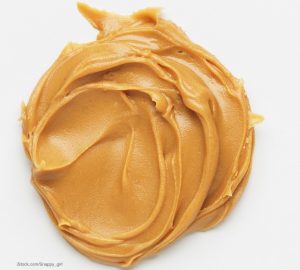Did you know that one corporation is adding caffeine to peanut butter? STEEM Peanut Butter, Inc. has been doing this, and the FDA is not sure they like it. There is 150 mg of caffeine in each serving of that peanut butter.
 On December 15, 2015, the FDA sent STEEM a letter asking for information about their use of caffeine in this product. The company has not submitted any information about the safety of caffeine in this product to the FDA.
On December 15, 2015, the FDA sent STEEM a letter asking for information about their use of caffeine in this product. The company has not submitted any information about the safety of caffeine in this product to the FDA.
The FDA “remains concerned about the increasing number of products on the market containing added caffeine and the possibility for harmful effects when multiple caffeinated products are eaten simultaneously, especially in products that are attractive to children,” the letter states.
The U.S. government has not developed guidelines for children’s caffeine intake. The Canadian government does have guidelines and recommends that preschoolers get no more than 45 milligrams of caffeine a day. That’s the amount found in a 12 ounce can of soda.
Caffeine is a stimulant and is defined as a drug because it stimulates the central nervous system. Overdosing on caffeine can produce symptoms such as upset stomach, headaches, difficulty sleeping, increased blood pressure, and an increased heart rate. In addition, caffeinated products, especially beverages, usually contain empty calories that are not nutritious.
The caffeine content of foods varies widely. Twelve ounces of iced tea contains 70 mg of caffeine, while 1 ounce of milk chocolate contains 6 mg. Twelve ounces of Mountain Dew have 55 mg, while “SumSeeds Energized Sunflower Seeds” have 140 mg of caffeine in one serving. In 2013, Wrigley’s promoted a new pack of gum; each piece had as much caffeine as half a cup of coffee. And energy drinks, of course, are a serious issue and have caused adverse reactions since they are packed with caffeine.
The FDA does not require the amount of caffeine in a food to be listed on the label. The substance is on the “generally recognized as safe” list and has been since 1958, as long as levels do not exceed 200 parts per million, or 0.02 percent of the total product. Even so, data shows that between 2006 and 2008, 1,200 cases of caffeine toxicity among children under the age of 6 were reported to poison control centers.
When caffeine is used in a drug, there are strict regulations that manufacturers must follow. Those products must including labeling information that states how much caffeine it contains. But when caffeine is used in dietary supplements, manufacturers do not need FDA approval. Many supplements contain caffeine that is not declared on the label.
In 2013, the FDA announced that it was going to investigate the safety of caffeine in food products, particularly its effects on children and adolescents. There is no further word on this action. In June 2015, the FDA answered a question about why caffeine amounts are not required on food labels. They stated: “Caffeine is not a nutrient. It is a natural chemical found in such items as tea leaves, coffee beans, and cacao. If caffeine is added to a food, it must be included in the listing of ingredients required on food product labels.”




